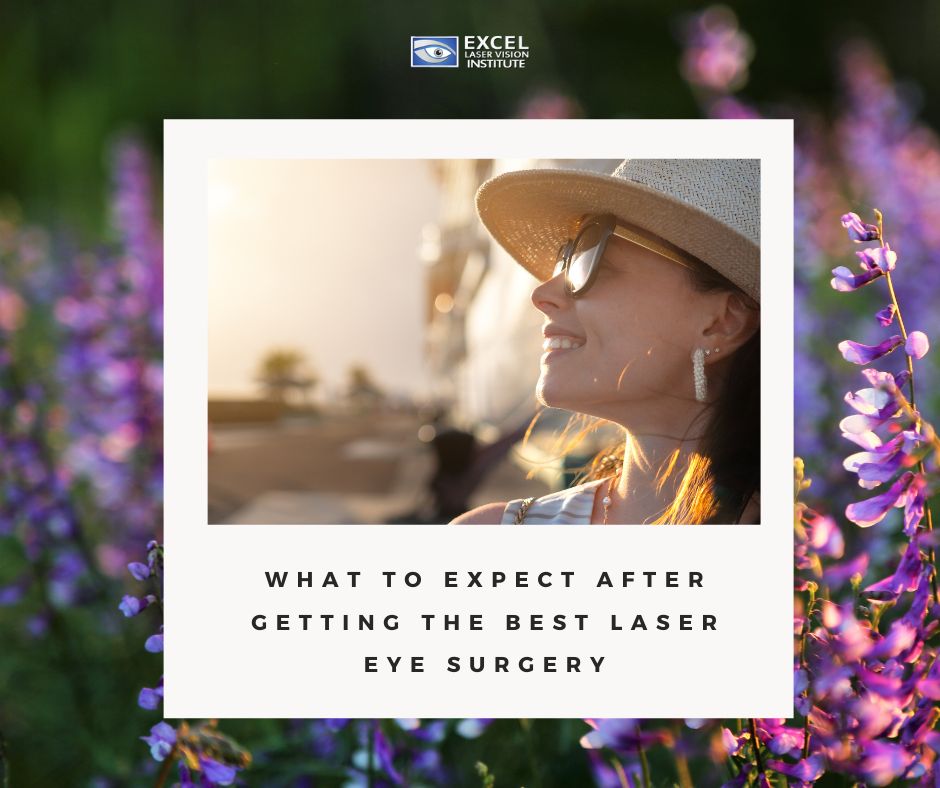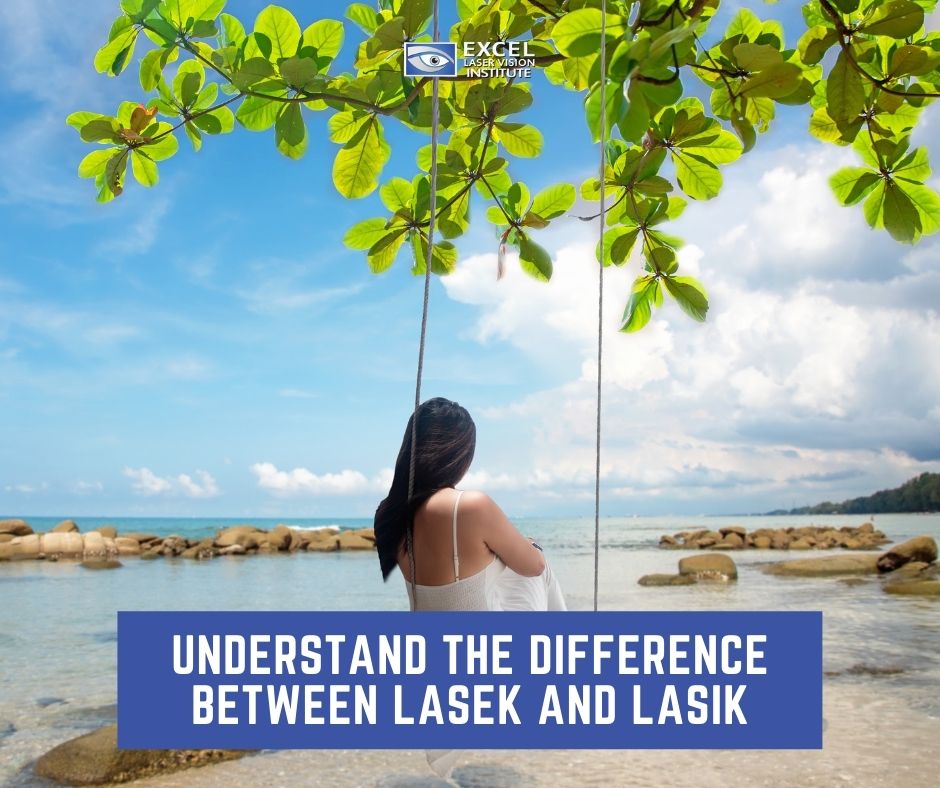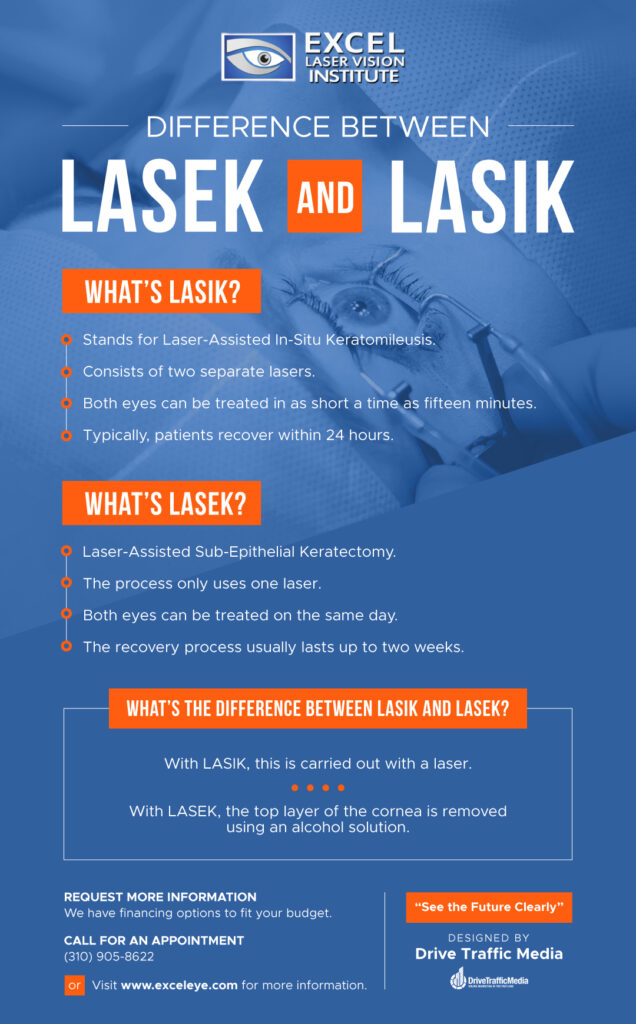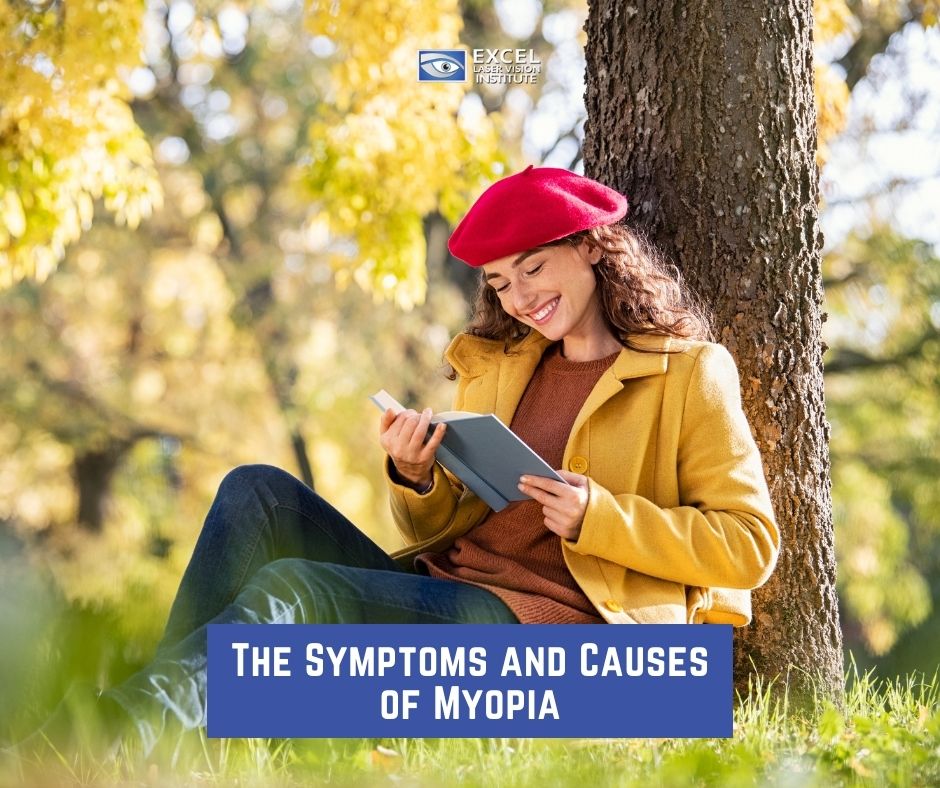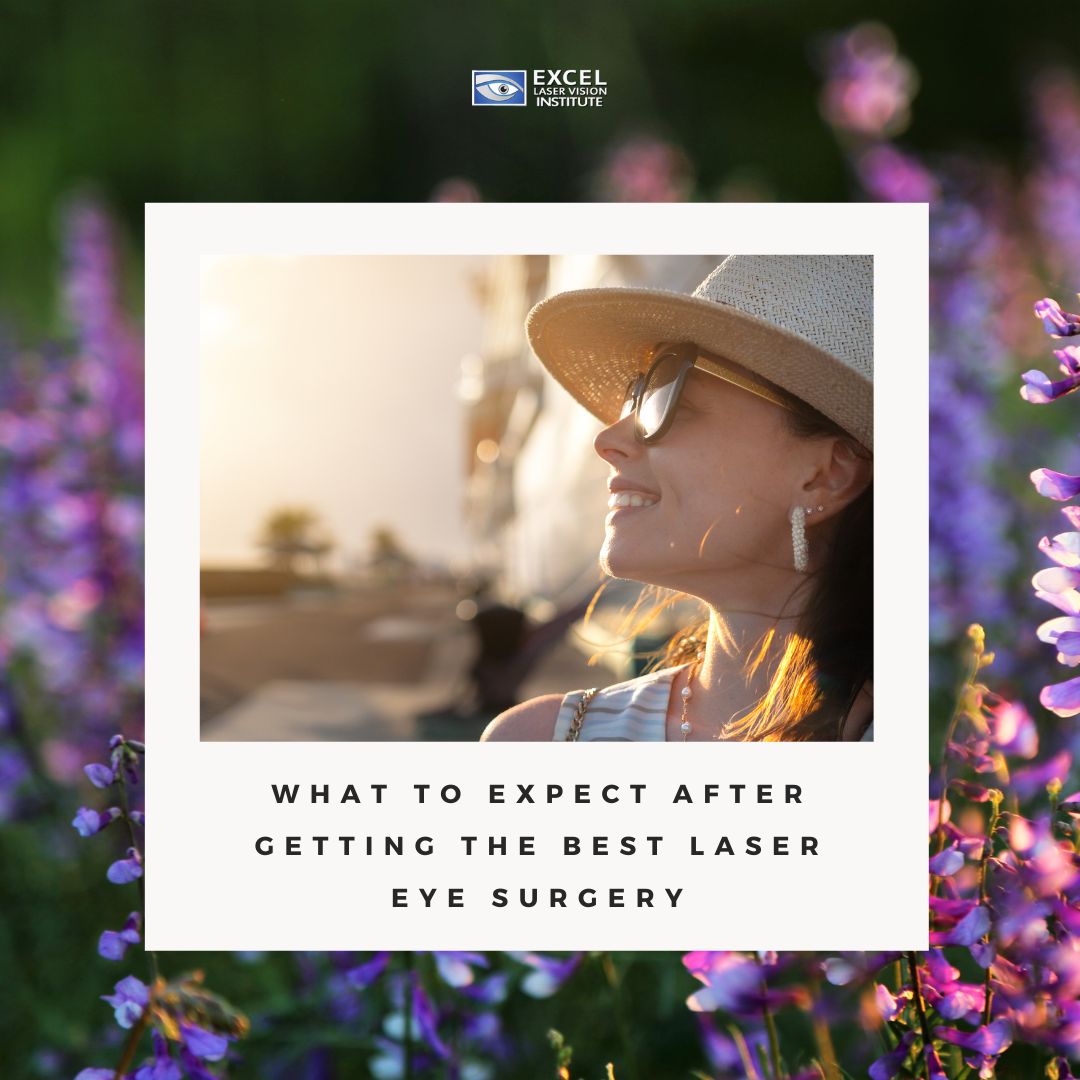
What to Expect After Getting the Best Laser Eye Surgery in Los Angeles
The best LASIK surgeons in Los Angeles agree that proper aftercare is crucial to having a successful surgery. You need to treat your eyes with a lot of care and love as they just went through a lot of work, as I’m sure anyone would need if they had lasers set on them!
Here’s what to expect after getting your life-changing laser eye surgery.
The First Few Hours After Your Surgery
After the surgery is completed, your eye surgeon will let you take a little cat nap to let your eyes recover from the ordeal. Then, when you open your eyes again, you’ll notice that everything around you will be pretty foggy like you’ve just opened your eyes underwater.
This can be a little disconcerting, but you shouldn’t worry about it. It’s completely normal! Your vision will eventually clear up the more your eyes heal, though some of our past patients had reported being very impressed by what they could already see the second they opened their eyes.
However, since your vision is still pretty affected, you still won’t be allowed to move around on your own. All LASIK surgeons will require a companion with you to either drive you to and from the appointment or guide you around public transportation. This is for your safety and the safety of others.
Your surgeon will also require you to wear eye shields. These need to be worn the whole day after your surgery and often the next few days as they will protect your eyes from damage. Eye shields prevent you from accidentally touching or rubbing your eyes, especially when you’re asleep and can’t control your movements. It also protects you from bacteria moving from your bedsheets or pillows to your eye.
And speaking of sleep, you’ll be doing a lot of it once you get home from your surgery. Sleep is the #1 way to let the eyes heal, so have a minimum of four hours of shuteye for a faster recovery process.
Once you wake up for the second time, the effects of the anesthesia will have worn off. You might experience discomfort and even pain—some of our patients describe it as having something sharp stuck in your eye, or a burning sensation that won’t go away.
Use your prescribed medications to help soothe your eyes. They should help you manage your pain by preventing infection and reducing inflammation. They also stop your eyes from itching by keeping them well-lubricated.
Here’s a neat trick: if your surgeon allows it, you should refrigerate your eye drops! They feel so good in the eye and can wake you up really quick.
The First Few Days After Your Surgery
As we mentioned earlier, you’ll need to wear your eye shields for the next few days to protect your corneal flap. While they’re technically only required at night, we still highly recommend wearing them whenever you can, especially if you’re prone to reaching for your eyes.
While you’re outside, you can start switching to sunglasses—they’ll protect your delicate eyes from the harsh UV rays and is something everybody should do even without getting LASIK. This is also super important as your eyes will still be pretty sensitive to light post-surgery.
Now, when it comes to taking a shower, you need some extra protection. Having unfiltered water and chemical-laden shampoos in your eye is a first-class ticket for harmful bacteria and unwanted pain. That’s why we highly recommend wearing swimming goggles or face shields while you’re showering, as these will keep your eyes nice and dry while you wash off. Alternatively, you could also keep your eyes firmly shut while you wash your hair, and then quickly wipe off the water with a towel after you’re done.
Not showering at all is also an option, albeit a slightly smelly one.
Lastly, you’ll need to visit your doctor for a follow-up appointment a day or two after your surgery. They’ll need to monitor your early recovery to see if it’s going as planned. Here, you can tell them what kind of side effects you’re experiencing—if you have dry eyes, puffy eyelids, excess tears, or any other condition, your doctor can prescribe something to help.
The First Few Weeks After Your Surgery
While the recovery process for LASIK Los Angeles is pretty quick, there are some things you still need to limit.
For one, you need to spend less time in front of your computer or reading. These activities contribute to dry eyes. If you must, just make sure to use your eye drops frequently to keep them lubricated.
Secondly, avoid wearing makeup products altogether. Eyeshadows, eyeliners, mascara, and other products have bacteria in them that can get transferred over to your eyes. This is why you should avoid large bodies of water like pools, lakes, and oceans too—they’re cesspools of bacterial contamination!
Thirdly, avoid being in places that have a lot of dust, dirt, and smoke. The tiny particles can enter your eye and can exacerbate the itchiness. Trust us, when you’ve got a healing corneal flap, the last thing you want to do is get a dust particle lodged in there! Avoid gardening and heading to places with lots of air pollution.
About a month after your surgery, you’ll be cleared for vigorous activities like aerobic exercises and weightlifting. With that said, you’ll still need to wear polycarbonate sports glasses to prevent trauma, even if you’re not required to wear eye shields to sleep anymore.
Your vision will fluctuate during this period as your eye heals even more. This is normal. Contact your surgeon only if your vision gets worse or if you start feeling pain for no reason.
The First Few Months After Your Surgery
It’ll take up to six months for your vision to stabilize, and it’s important to have regular check-ups with your eye surgeon. As we mentioned earlier, they can track your healing process, prescribe medications, and identify any issues before they get any worse. Aim to visit them at least once every month.
As your vision stabilizes, you might have problems with halos, starbursts, glares, and others. They resolve themselves for the most part, but in some extremely rare cases, they might not be fixed. Your vision could also not be 100% even after proper healing. In that case, you can consult with your doctor and see if this is something that can be fixed with another surgery, free of charge.
LASIK in the Long Run
Now, keep in mind that LASIK isn’t a magic surgery that’ll make you immune to all future eye problems. LASIK only fixes irregularities in your cornea—it doesn’t prevent irregularities that eventually develop in other parts of your area. As you get older, you can become nearsighted or farsighted again due to conditions like presbyopia and hyperopia. You can also develop eye problems like glaucoma and cataracts.
However, these conditions don’t usually show up until you’re well in your 40s. You’ll have lots of time to enjoy the benefits of your LASIK, free of pesky eyeglasses and contacts. Savor it while you can!
10 Realistic Expectations Regarding LASIK
Realistic expectations are crucial when considering Los Angeles LASIK (Laser-Assisted In Situ Keratomileusis) surgery, as it’s a medical procedure that can significantly improve vision but may not guarantee perfect results for everyone. Here are some realistic expectations you should have about LASIK:
Improved Vision
LASIK can effectively correct refractive errors such as nearsightedness (myopia), farsightedness (hyperopia), and astigmatism. The primary goal of LASIK is to improve vision, often reducing or eliminating the need for glasses or contact lenses for many everyday activities.
Reduced Dependency on Corrective Eyewear
While LASIK can significantly reduce dependency on glasses or contacts, it may not eliminate the need for them in all situations. Some individuals may still require reading glasses for close-up tasks due to presbyopia, a natural aging change in the eye that typically occurs after age 40.
Potential for Complications
Like any surgical procedure, LASIK carries risks and potential complications, although rare. These may include dry eyes, glare, halos, fluctuations in vision, undercorrections, overcorrections, and, in rare cases, more severe complications such as infection or corneal ectasia.
Realistic Vision Expectations
While LASIK can provide excellent visual outcomes for many individuals, it’s essential to understand that achieving “perfect” vision is not guaranteed. Factors such as the severity of refractive error, corneal thickness, pupil size, and individual healing responses can influence the final visual outcome.
Time for Healing and Stabilization
It takes time for the eyes to heal and vision to stabilize after LASIK surgery. While some individuals may experience improved vision immediately or within a few days, others may require several weeks or months for optimal results. Following post-operative instructions and attending follow-up appointments to monitor progress and address concerns is essential.
Possible Need for Enhancement
In some cases, additional procedures or enhancements may be necessary to achieve the desired visual outcome after LASIK surgery. This may occur if there is residual refractive error, undercorrection, overcorrection, or regression of the initial correction over time. Your surgeon can discuss the possibility of enhancements based on your circumstances.
Long-Term Results and Stability
While LASIK can provide long-lasting visual improvement for many individuals, the stability of the results can vary. Factors such as age, hormonal changes, eye health, and lifestyle factors can influence the long-term stability of the correction. Some individuals may experience changes in vision over time and may require additional vision correction.
Pre-Existing Eye Conditions
LASIK may not be suitable for individuals with certain pre-existing eye conditions or factors that increase the risk of complications. These may include cataracts, glaucoma, severe dry eye syndrome, corneal abnormalities, or autoimmune diseases affecting the eyes. It’s essential to undergo a comprehensive eye examination and evaluation to determine suitability for LASIK surgery.
Continued Eye Care
Even after successful LASIK surgery, it’s essential to maintain regular eye exams and follow-up care with an eye care professional. Routine eye exams can help monitor eye health, detect any vision changes, and address any potential issues promptly to ensure long-term ocular health and visual stability.
Satisfaction with Improvement
While LASIK can significantly improve vision and quality of life for many individuals, satisfaction can vary from person to person. Having realistic expectations and understanding that LASIK is not a guarantee of perfection but a treatment option that can substantially benefit many individuals is essential.
Conclusion
Having realistic expectations about LASIK surgery is essential for making an informed decision and achieving satisfactory outcomes. While LASIK can significantly improve many individuals’ vision and quality of life, it’s essential to understand the potential risks, limitations, and variability in results. By discussing your goals, concerns, and expectations with a qualified eye care professional, you can decide whether LASIK is the right choice for you.
If you’re interested in learning more about LASIK, why not contact the office of Dr. Ferzaad Moosa? He is a licensed, board-certified surgeon that has been offering high-quality LASIK in Los Angeles for the past 23 years. He’ll help you achieve the perfect vision with outstanding talent, revolutionary technology, and state-of-the-art care facilities.
Visit our website here and fill out our free evaluation form. You could also contact us at (310) 905-8622 to set an appointment.
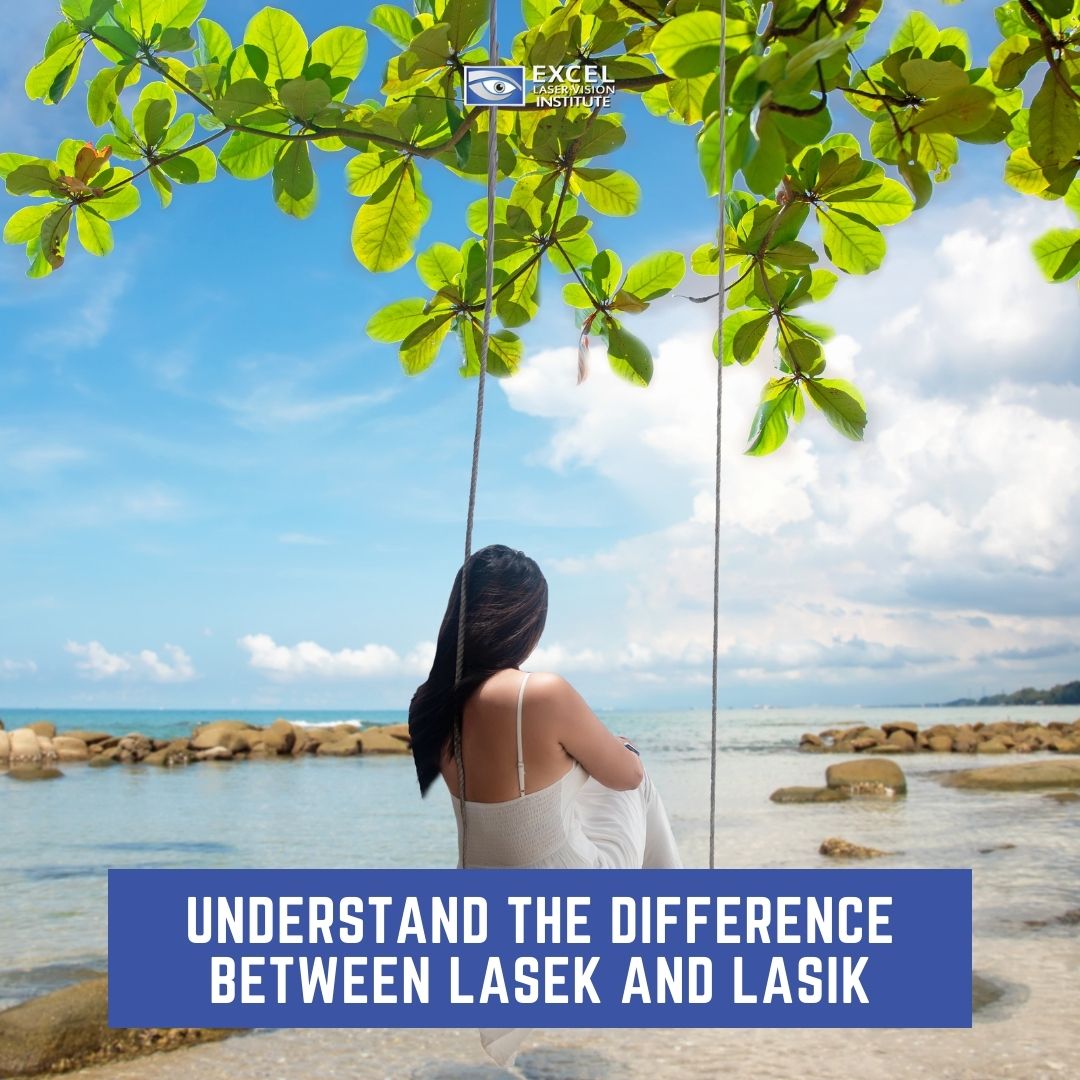
Understand the Difference Between LASEK and LASIK Los Angeles
If you aren’t a doctor or didn’t study medical terms, it can be confusing when you come across certain medical terms and jargon. The LASIK Los Angeles eye doctors believe you should go ahead and do your research into laser eye surgery, and if you encounter something you don’t understand, don’t hesitate to ask the best LASIK surgeons in Los Angeles about the terminology. Most of the time, patients don’t know the difference between vision correction procedures that are available to them, and that also goes for the differences between LASIK and LASEK.
The LASIK surgeons Los Angeles have to admit that LASIK and LASEK are nearly identical names, which doesn’t help matter much, but there are easy, noticeable distinctions between LASEK and LASIK that patients have to understand before going ahead with laser eye surgery.
What’s Laser Eye Surgery?
Laser eye surgery is a vision correction procedure that’s purpose is to make the patient less dependent on glasses or contact lenses.
Oftentimes known as laser vision correction, laser eye surgery utilizes lasers to alter the shape of the cornea (the front surface of the eye) which provides enhanced focus. Laser eye surgery can sufficiently correct both long and short-sightedness, as well as astigmatism. Although LASIK Los Angeles is known as ‘surgery’, it doesn’t require an incision.
The two main types of laser eye surgery are LASEK and LASIK. Their fundamental difference is based on the way the top corneal layer is taken off.
What’s LASIK?
LASIK stands for Laser-Assisted In-Situ Keratomileusis and is the best laser eye surgery in Los Angeles. It consists of two separate lasers. The first is a femtosecond laser that makes a thin, round flap on the cornea, which the doctor then folds back to enter the stroma or underlying part of the cornea.
When this step has been completed, the doctor utilizes an excimer laser to change the shape of the stroma. This takes away tissue from the cornea, to provide better vision and focus.
LASIK is usually a painless procedure, and both eyes can be treated in as short a time as fifteen minutes. Typically, patients recover within 24 hours.
What’s LASEK?
LASEK or Laser-Assisted Sub-Epithelial Keratectomy, also known as (LASEK), is slightly different from LASIK since the process only uses one laser. Rather than using a laser to create a flap in the top corneal layer, the eye surgeon applies an alcohol solution which helps to soften the surface layer, supporting it to be moved to the eye’s side.
When this top corneal layer has been removed, the eye surgeon can change the shape of the cornea with a laser. The top corneal layer is then brought back to its original position, and a protective contact lens is placed on the eye to magnify comfort during the healing process. In many situations, this can be taken off after four days.
Most eye surgeons will recommend LASEK to patients who have thin corneas, or other problems which may make conventional laser eye treatment complicated or risky. Similar to LASIK, both eyes can be treated on the same day, but the recovery process is a tad slower, usually lasting up to two weeks.
What’s The Difference Between LASIK And LASEK?
The most significant difference between LASIK and LASEK procedures is the method that the cornea is uncovered. With LASIK, this is carried out with a laser; when it comes to LASEK, the top layer of the cornea is removed using an alcohol solution.
Some LASIK Los Angeles patients, particularly those with thin corneas, will be told by their eye surgeons that their eyes are unsuitable for LASIK treatment and will be advised to go for a LASEK procedure.
What Are The Advantages And Disadvantages Of LASIK?
The advantages of LASIK are simple. The procedure can be done within fifteen minutes, and the patient normally recovers within 24 hours. The primary disadvantage of LASIK is the fact that patients with thin corneas are not suitable candidates for LASIK, and it’s not the most efficient procedure to treat individuals with severe short-sightedness. Also, patients who are at high risk of suffering an eye injury may want to avoid LASIK, since there is a possibility of the corneal flap being detached.
What Are The Advantages And Disadvantages Of LASEK
The best thing about LASEK is the fact that it’s suitable for all patients, and this includes those with thin corneas, pre-existing medical conditions, and severe short-sightedness.
Because the procedure does not require the eye surgeon to create a flap in the cornea, there is less risk for the patient to suffer from dry eyes than with LASIK. Also, this means LASEK patients can return to contact sports sooner than is recommended with LASIK.
LASEK’s main disadvantage is the recovery time, which is longer, and usually more uncomfortable than LASIK’s.
What’s The Cost Of LASIK VS LASEK?
Because LASIK Los Angeles needs more complex equipment to carry out a procedure compared to LASEK, the cost of the surgery is usually slightly higher. At Excel Laser Vision Institute, we have various financing options to suit your needs.
Before you decide on the type of procedure you want to do, make sure you talk to a medical professional who specializes in this sort of treatment. At Excel Laser Vision Institute, we offer free consultations, which you can book here. Or else, you can call us on (310) 905-8622, to book an appointment with us.

Will the Covid-19 Vaccine Affect Your Vision?
Some LASIK Los Angeles patients are apprehensive about the COVID vaccines and how it affects their vision. There are fears of side effects as well as vision issues. Doctor Moosa, one of the best LASIK surgeons in Los Angeles says it is the main reason some people are hesitant to get a COVID-19 vaccine. At the moment, there’s no evidence that any of the vaccines cause overall vision-related side effects. Presently, three vaccines are being used in the United States:
Pfizer-BioNTech, now completely approved by the FDA under the brand name Comirnaty.
Moderna.
Johnson & Johnson / Janssen.
The CDC says, many vaccine side effects are moderate, and are “normal signs that the body is building protection.” LASIK surgeons in Los Angeles inform us that they do not include eye- or vision-related symptoms.
These common side effects include:
Redness, pain, and/or swelling in the arm where you got the injection.
Fatigue, headache, chills, muscle pain, fever and/or nausea.
These prevalent reactions usually go away within a few days.
What Are The Rare Reactions To The Johnson & Johnson Vaccine?
In some instances, a blood-clotting condition called TTS (Thrombosis with thrombocytopenia syndrome) can happen in the weeks following a Johnson & Johnson vaccination. TTS is extremely rare and happens in around 3 in every 1 million adults.
The best laser eye surgery doctors in Los Angeles say that blurry vision can be a symptom of TTS, plus several other symptoms.
Also, the rare nerve condition Guillain-Barre syndrome has been noticed in around eight in every one million adults vaccinated with the Johnson & Johnson vaccine.
Guillain-Barre syndrome can cause eye-related symptoms such as double vision and issues moving the eyes, along with other neurological symptoms.
If you detect any symptoms of TTS or Guillain-Barre in the days or weeks after a J&J vaccine, get medical help immediately.
Although these are uncommon reactions, the CDC has emphasized that — compared to a COVID-19 infection — the advantages of the J&J vaccine cancel out any risks.
Eye Issues Linked To Other Vaccines
Although the COVID-19 vaccines have still not caused notable side effects yet related to vision, vaccines for many other conditions have been connected to eye and vision issues.
Seasonal flu vaccine
In exceptional cases, some patients who’ve got the flu vaccine experienced mild symptoms such as eye redness, eye pain, and blurred vision.
Common side effects of the flu vaccine include:
Headache
Redness, soreness, or swelling at the injection spot
Fever
Nausea
Muscle aches
Measles-Mumps-Rubella (MMR) Vaccine
Some studies reveal that optic neuritis is an unusual complication from the vaccine for the measles-rubella (MR) vaccine. Optic neuritis is inflammation altering the optic nerve that transmits cues from the back of the eye to the brain.
Typically, side effects of the MMR vaccine include:
Mild rash
Swollen cheek or neck gland
Fever
Temporary joint pain (significantly in adolescent and adult females)
Rare side effects consist of short-term seizures and low platelet count. The MMR vaccine can lead to deafness, long-term seizures, coma, or brain damage in sporadic instances.
Chickenpox and shingles vaccines
Research has found rare corneal inflammation in children (chickenpox) and adults (shingles) after receiving the zoster virus vaccine for both conditions.
Common side effects from the chickenpox vaccine consist of the following:
Temporary joint pain and stiffness
Mild rash and soreness at the injection spot
Fever
For the shingles vaccine, typical side effects are:
Swelling, redness, soreness, and at the injection site
Muscle pain
Tiredness
Headache
Fever
Shivering
Stomach pain and nausea
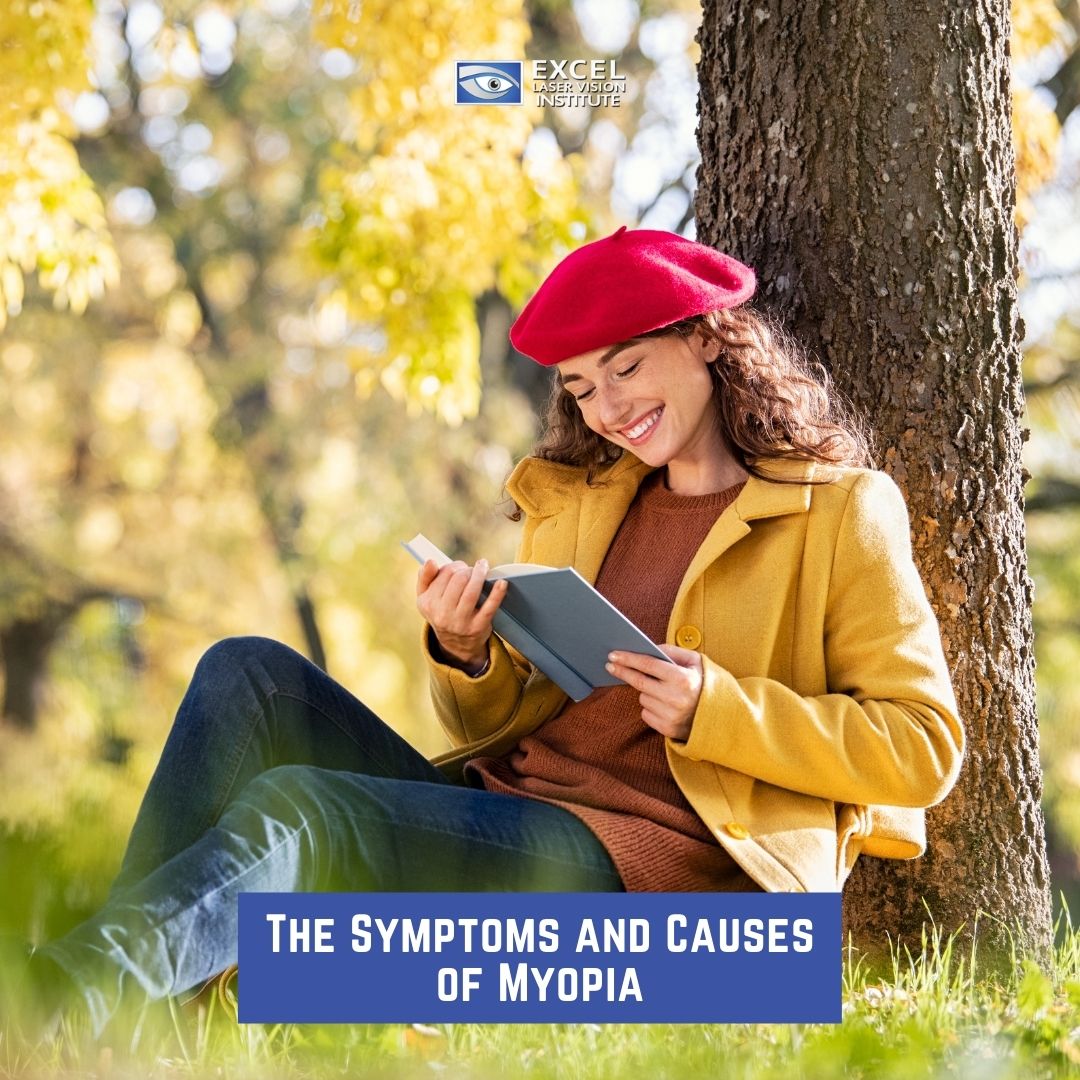
The Symptoms and Causes of Myopia
The LASIK eye doctors in Los Angeles let us know that Myopia, also known as nearsightedness, is the most prevalent cause of impaired vision in people under age 40. Recently, it’s becoming more common at an alarming rate. Around the world, research suggests that in the year 2000, an estimated 25 percent of the world’s population was nearsighted, but by the year 2050, it’s anticipated that roughly half the people in the world will be myopic.
What Are The Symptoms Of Myopia?
When you speak to the best LASIK surgeons in Los Angeles and find that you are nearsighted, you will find it very challenging to read road signs and see distant objects clearly. However, you will find that it is a lot easier to see and do close-up tasks such as computer use and reading.
The LASIK surgeons say that the other symptoms and signs of Myopia consist of squinting, eye strain, headaches, and feeling fatigued when driving or playing sports. All these are symptoms of uncorrected nearsightedness.
If you notice these signs or symptoms while wearing your glasses or contact lenses, schedule an eye exam with your LASIK doctor in Los Angeles to see if you need to modify your prescription to something stronger.
What Causes Myopia?
Myopia happens when your eyeball is too long, with respect to the focusing power of the lens and cornea of the eye. As a result, light rays aim attention at a point in front of the retina instead of directly on its surface.
Essentially, the best laser eye surgery simplifies this by saying that Myopia happens when light concentrates too distant in front of the retina.
Also, nearsightedness can come about when the cornea and/or lens are too curved for the eyeball length. In some cases, Myopia happens because of a combination of these factors.
Typically, Myopia starts in childhood, and you may have a probable chance of having it if your parents have nearsightedness. In most situations, nearsightedness stabilizes in early adulthood, but sometimes it carries on to progress with age.
What’s The Treatment For Myopia?
There are some effective myopia control methods for children with progressive nearsightedness, including myopia control glasses, atropine eye drops, myopia control contact lenses, and Ortho-k contact lenses.
For the rest of us, nearsightedness can be corrected with standard contact lenses, prescription eyeglasses, or refractive surgery.
Depending on how bad your Myopia is, your eye doctor may advise you to constantly wear your eyeglasses or contact lenses or only when you require very clear distance vision. For instance, when you’re driving, seeing a whiteboard, or watching a movie.
Suitable selections for eyeglass lenses for nearsightedness include high-index lenses (for thinner, lighter glasses) and lenses with anti-reflective coating. Also, think about photochromic lenses to protect your eyes from UV rays and high-energy blue light and to scale down the need for a separate pair of prescription sunglasses.
If you’re nearsighted, you may notice that the first number (“sphere”) on your eyeglasses prescription or contact lens prescription will be ahead of a minus sign (–). Keep in mind that the higher the number, the more nearsighted you are.
Refractive surgery can lower or even stamp out your need for eyeglasses or contacts. An eye surgeon carries out the most common procedures using an excimer laser.
- In PRK, the laser takes off a layer of corneal tissue, which flattens the cornea and lets light rays focus more precisely on the retina.
- In LASIK, which is the most prevalent refractive procedure, a thin flap is made on the surface of the cornea, a laser gets rid of some corneal tissue, and then the flap is brought back to its original position.
Last but not least, there is orthokeratology, which is a non-surgical procedure where you wear special rigid gas permeable (RGP or GP) contact lenses at night that reshape your cornea while you sleep. When you take off the lenses in the morning, your cornea for a short period keeps to the new shape, so you can see clearly during the day without having to rely on eyeglasses or contact lenses.
Orthokeratology and an accompanying general practitioner contact lens procedure known as corneal refractive therapy (CRT) have been shown to temporarily correct mild to moderate amounts of Myopia. Both methods are excellent alternatives to surgery for individuals who are too young for LASIK or are not suitable candidates for refractive surgery.
Additionally, implantable lenses called phakic IOLs another surgical option for correcting nearsightedness, especially for persons with high amounts of Myopia or thinner-than-normal corneas that could escalate their risk of complications from LASIK or other laser vision correction procedures.
Phakic IOLs work similarly to contact lenses, except they are surgically placed within the eye and are usually permanent, which means no upkeep is required. Unlike IOLs used in cataract surgery, phakic IOLs do not replace the eye’s natural lens, which is left intact.
How To Control Myopia?
Since many people are becoming nearsighted, there is a lot of appeals to discover methods that control myopia progression in childhood.
Various techniques have been attempted, including fitting children with progressive lenses, bifocals, and gas permeable contact lenses. All of these have brought mixed results.
Recent clinical trials revealed that low-dose atropine eye drops could decelerate myopia progression in school-age children, with far fewer side effects compared with higher concentrations.
However, some children don’t respond well to atropine drops.
Based on a 2017 study from the American Academy of Optometry meeting, a dual-focus disposable contact lens decreased the progression rate of Myopia with children between the ages of 8 and 12 years when on par with a single vision lens.
Make sure to visit Excel Laser Vision Institute if you’re having problems seeing near objects or find yourself holding your smartphone or reading material further away to make out the words. The professional, dedicated and caring staff at Excel Laser Vision Institute can treat your nearsightedness.
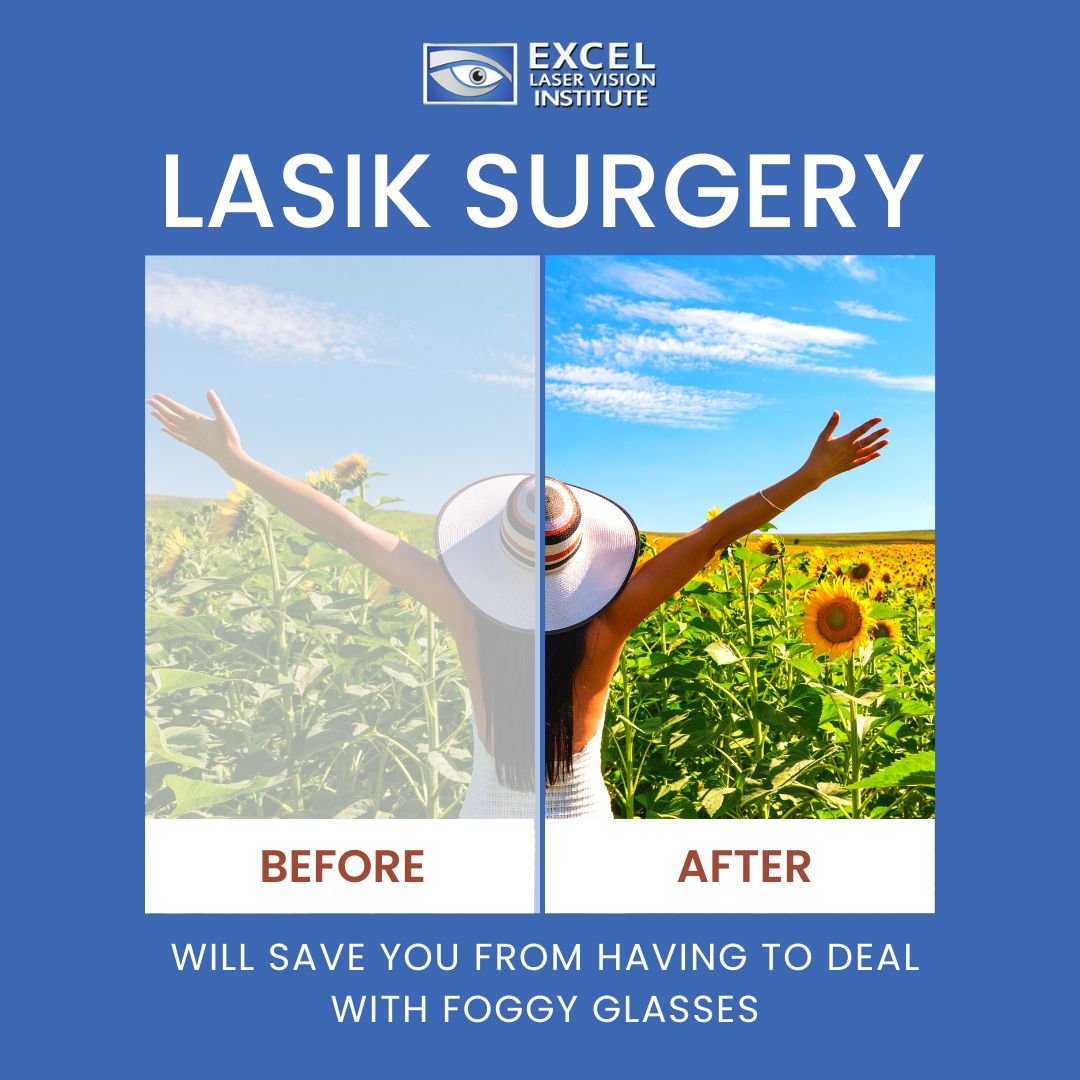
LASIK Surgery Will Save You from Having to Deal with Foggy Glasses
One of the reasons that so many people get excited about LASIK surgery in Los Angeles is that it can often free an individual from wearing contacts or glasses. This independence from corrective lenses is not only convenient; it’s life-changing. With recent health orders asking people to wear facemasks in public, more and more individuals that rely on glasses are struggling with the common problem of foggy glasses.
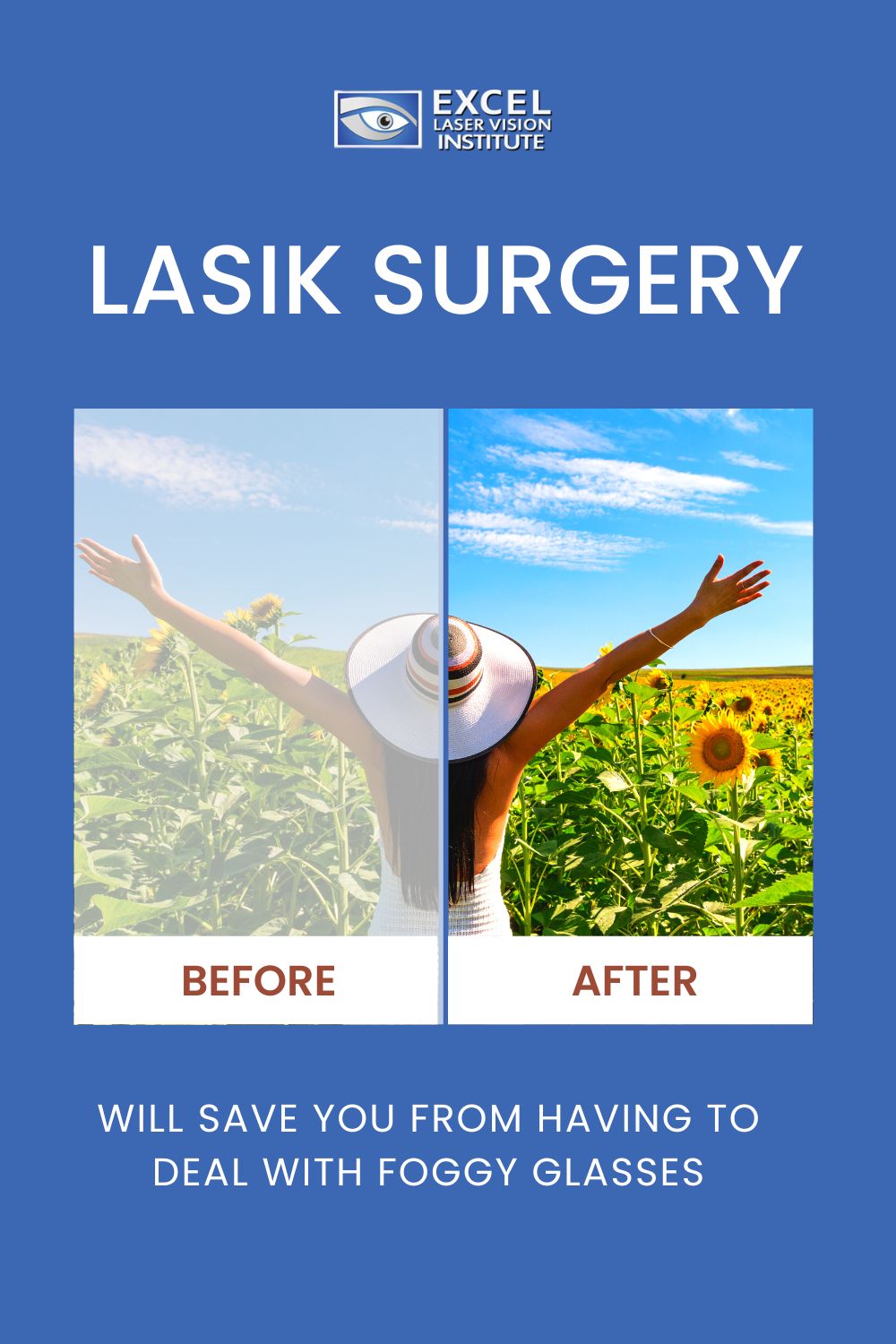
Foggy glasses are hard to avoid when a face covering is necessary for most public spaces, especially now that we are entering the winter season. Even with masks that have tight, bendable nose bridges, air escapes and obstructs the vision of anyone wearing glasses. This is both inconvenient and dangerous. People walking in public, driving, and working can not effectively see because they are constantly dealing with foggy glasses. Plus, their risk of contracting a virus increases with the amount of adjusting they must do to compensate for this fogging-up problem. Many people are starting to search for the best laser eye surgery in Los Angeles as a long-term solution.
When the world was first struck with a new virus, many people were warned against wearing contact lenses. Glasses were a safer alternative because they did not require direct contact with the eye. This recommendation still stands. However, glasses present their own problems. Besides fogging up, glasses are easily breakable and can be lost, making it difficult for people to always rely on them. There are some temporary solutions to glasses fogging up, like using soap and water to wash the lenses or an anti-fog spray. However, these are not fool-proof solutions and can only provide so much of a barrier from moisture.
According to LASIK experts such as Doctor Moosa, the key to foggy glasses is that our breath is both warm and moist. This presents the same problem as a car windshield in the wintertime. When exhaling with a mask on, the water vapor is trapped and concentrated. All it takes is a little gap in our facemasks to cause this air to shoot upward onto our prescription lenses. The surface tension of the droplets causes them to spread like a thin film. The fog will only last until the water evaporates. However, by then, you have probably exhaled again and the fogging process begins all over again.
Fortunately, foggy glasses do not have to become the norm during this time. Many people are looking into LASIK as a permanent method of vision correction so that they may be less dependent on other means. LASIK eye surgery cost is more affordable than ever, especially with various financial plans available. If you are interested in laser eye surgery, then you can schedule an appointment with a LASIK clinic for an eye exam and consultation. Make sure to ask all of your burning questions about the procedure, such as how long does it take and how much is laser eye surgery. You will be well taken care of by experts and guided through the process to reach your vision goals.
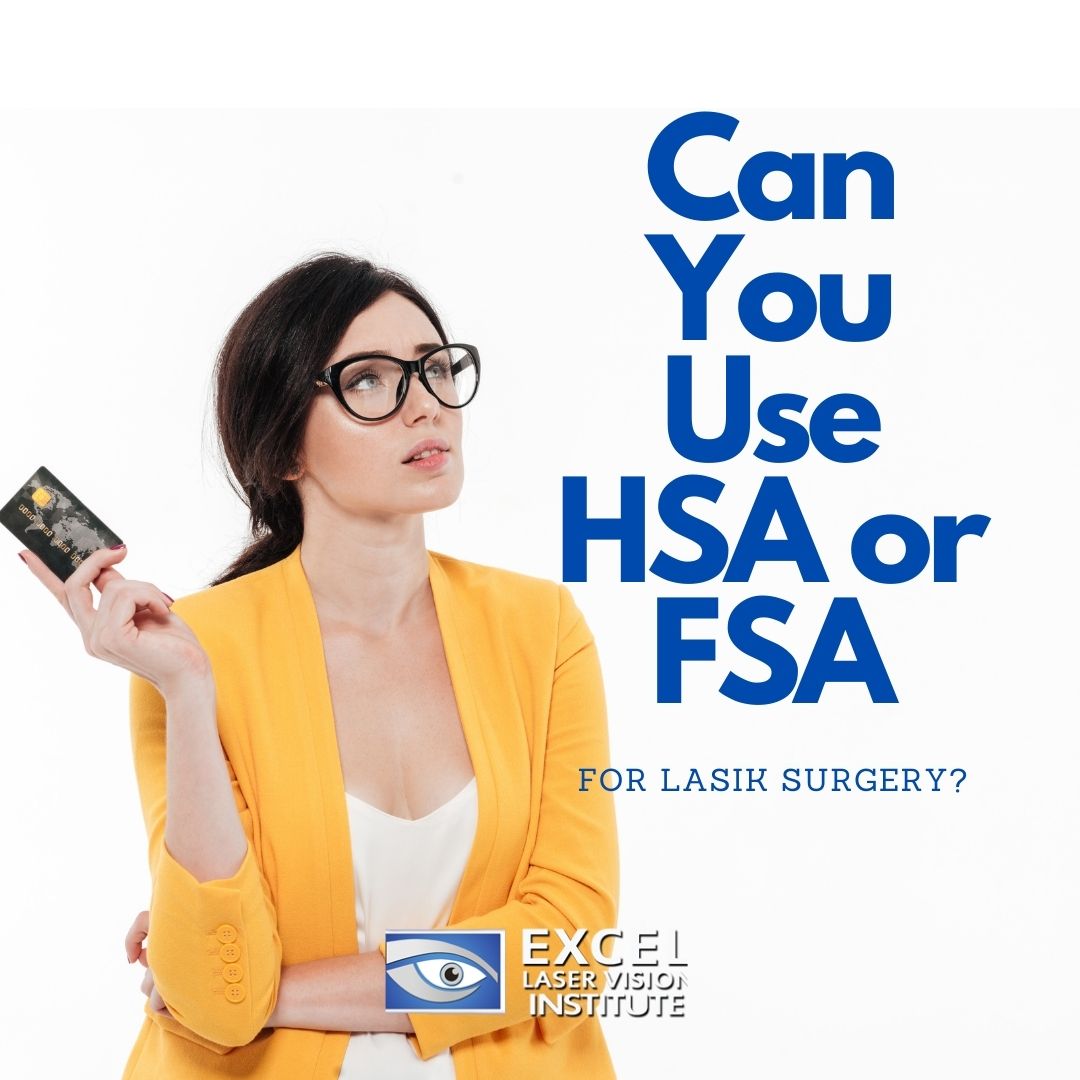
Can You Use HSA or FSA for LASIK Surgery?
Many people will immediately assume that the price for LASIK surgery in Los Angeles is out of their budget. The reason for this is that it is such a highly regarded vision correction procedure that can target various levels of astigmatism, farsightedness, and nearsightedness. Since it has such a high patient satisfaction rate, people tend to believe that they will not be able to afford it. However, there are actually quite a few financial options available to pay for laser eye surgery.
When you are investigating LASIK eye surgery cost in Los Angeles, be sure to check with your health insurance company. Certain individuals may be able to have parts of the procedure covered by their insurance plan. However, if you (like many others) do not qualify for insurance coverage, then you can also check into payment options like FSA and HSA.
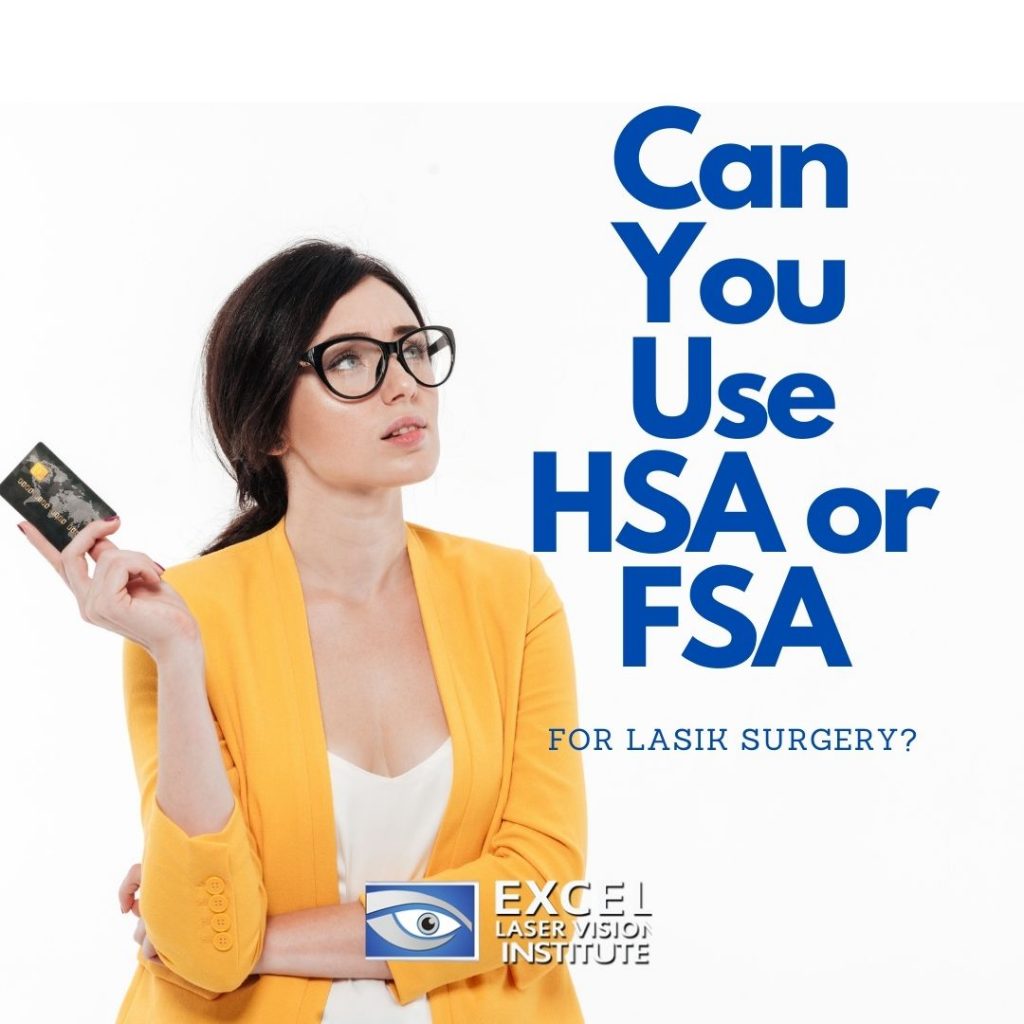
Health Savings Account (HSA)
Basically, HSA is a savings account that is exempt from taxes when it is combined with a high-deductible health plan. Many people use a health savings account to pay for large medical expenses because it will not be taxed. In order to utilize this account with your health insurance plan, you must ensure that they are compatible. According to Doctor Moosa, one of the leading LASIK experts in Los Angeles, the IRS will often change the requirements of high-deductible plans. So, you should always do your research to make sure that you can use an HSA to pay for your laser eye surgery.
Flexible Savings Account (FSA)
When people have health insurance through their employer, they can often use flexible savings account for copayments, medications, deductibles, and other health care expenses. These accounts can help reduce overall taxes as well. While employers are not required to contribute to FSAs, some may do so anyway. Check with your HR department to learn more about your company’s policy. Generally, there are set guidelines for what a flexible spending account can be used for.
How Much is Laser Eye Surgery
Before looking at your financing options, you should first understand the total cost of your LASIK surgery. Most clinics will offer a quote of around $2,000 an eye, which will equal about $4,000 for both eyes. However, these prices may vary according to the experience of the surgeon, the technology available, and the complexity of the procedure needed. When estimating the total price, the best laser eye surgery clinic in Los Angeles such as Excel laser Vision Institute will account for the presurgical testing and consultation as well as the postsurgical follow-ups. Transparency is key when it comes to understanding these expenses.
Health Insurance
LASIK is considered an elective procedure, which is why most health and vision insurance policies do not cover it. However, there are some professions in which LASIK may be considered a necessity. Some of these include: military service, law enforcement, and professional sports athletes. Alternatively, some insurance policies may be disputed if LASIK will improve overall eye health due to allergies, dry eye, or contact lens intolerance. The only way to know if your insurance will cover any part of laser eye surgery is to ask.
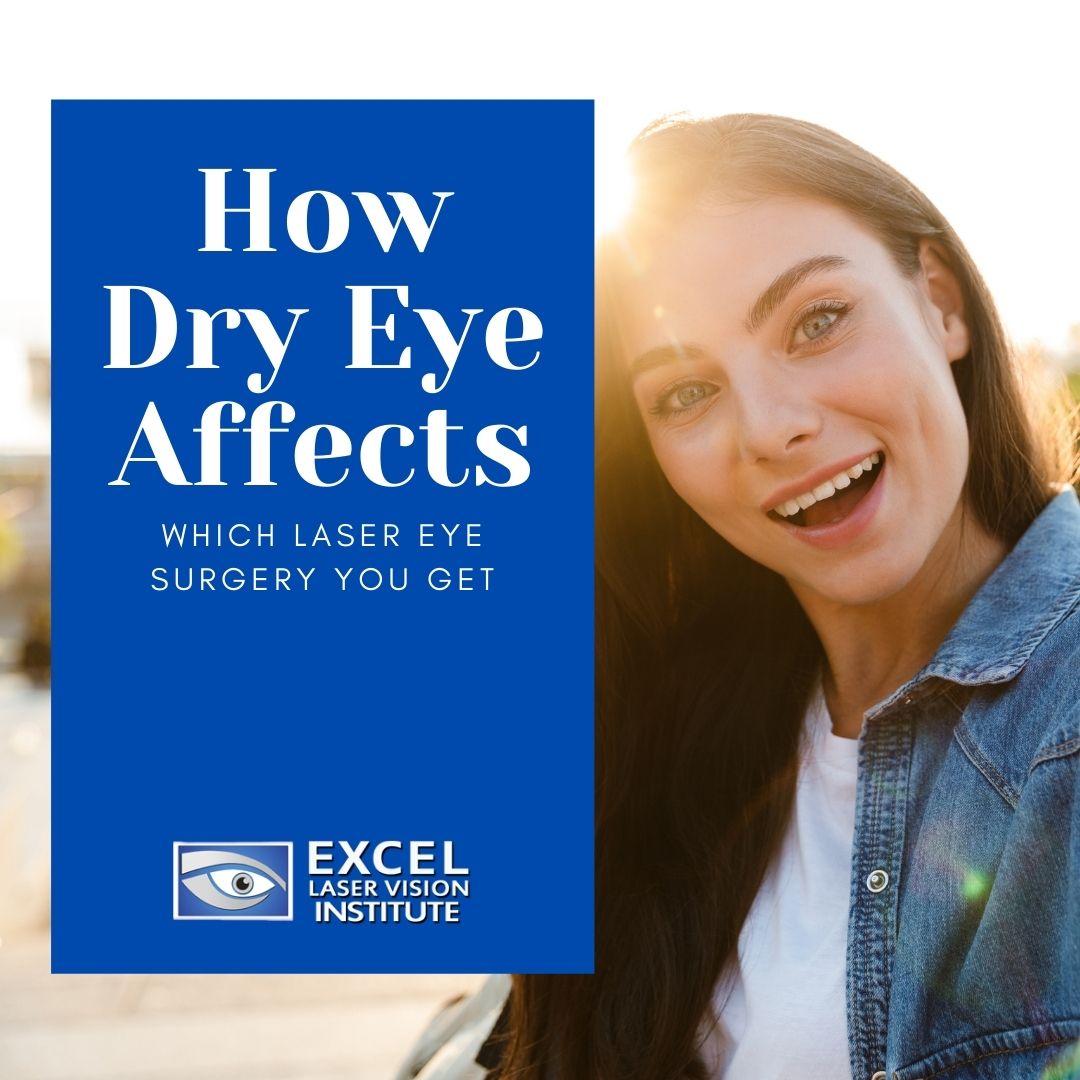
How Dry Eye Affects Which Laser Eye Surgery You Get
According to the eye doctors from Excel Laser Vision Institute, a LASIK clinic in Los Angeles, tears are a very important part of our eye’s cleansing process. This moisture can help remove irritants before they get to the delicate surface of the eye. Tears also contain substances that are crucial for eye tissue health. When recovering from refractive surgery, your eyes require tears to heal. However, people that are prone to dry eye can have a more difficult time getting these procedures or may not be qualified for some surgeries at all.
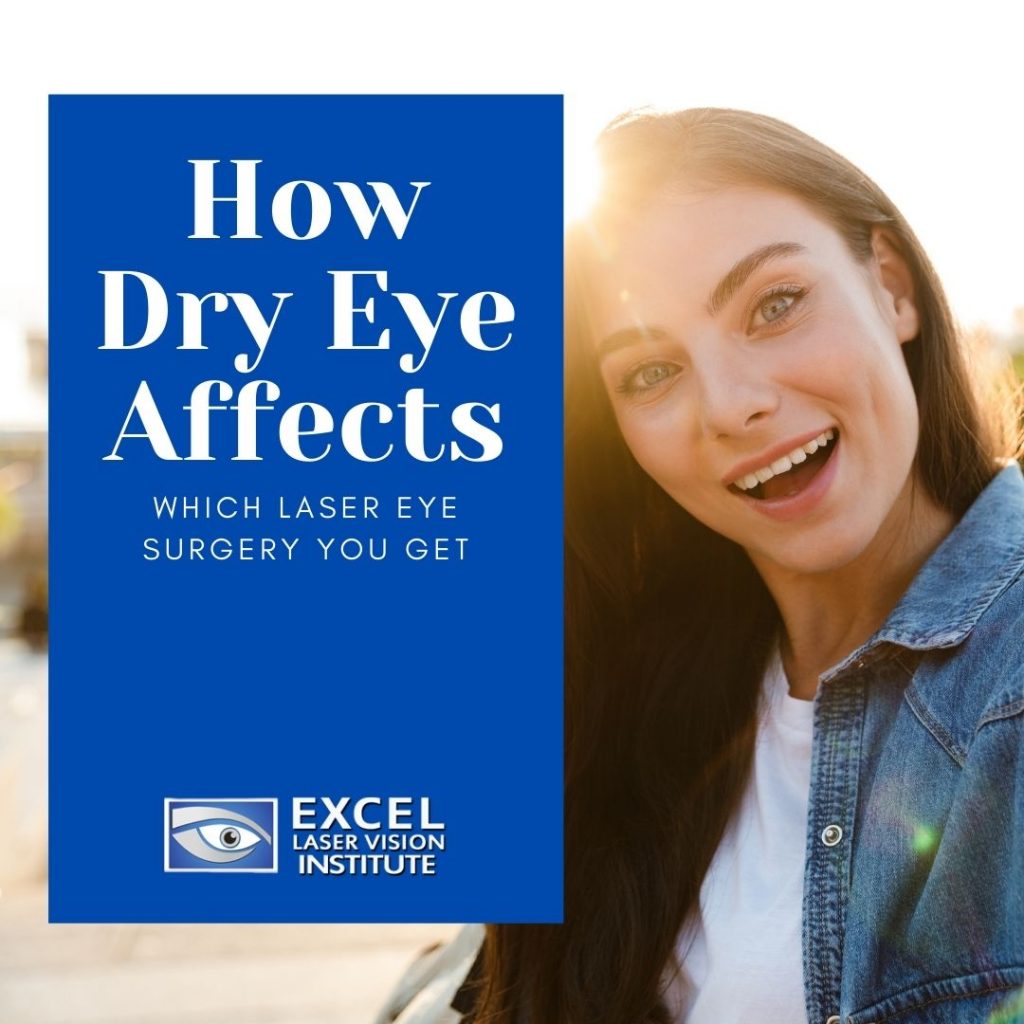
The goal of both LASIK and SMILE refractive surgeries is to carefully reshape the eye so that light is better able to focus on the retina. While these are very effective at correcting vision, they can potentially interfere with a patient’s ease of producing tears. Patients are usually prescribed drops after their surgery in order to supplement drier eyes and optimize recovery time. However, a patient that is predisposed to a dry eye condition may require a certain refractive surgery over another to reduce the chances of extreme dry eye.
SMILE, the newest innovation in laser eye surgery, differs from LASIK in that it does not require the creation of a corneal flap. According to Doctor Moosa, one of the LASIK experts in Los Angeles, the very nature of the SMILE method may reduce the chances of postoperative dry eye. Since the procedure is flapless, less nerves in the eye need to be cut. These nerves exist to trigger tears when your eye is dry. So, SMILE could, in essence, conserve the amount of nerves cut and thus significantly reduce the chances of dry eye symptoms. SMILE specializes in the treatment of nearsightedness and therefore must be utilized within certain parameters.
If you’re hoping to receive the best laser eye surgery, then you should research clinics with a high reputation. The Excel Laser Vision Institute is one clinic in Los Angeles that is known for its patient satisfaction rates, thanks to an incredibly experienced surgeon. Clinics like these perform a comprehensive exam and analysis of your eye health in order to determine if you qualify for LASIK, SMILE, or another version of refractive surgery to achieve your vision goals. Fortunately, LASIK eye surgery cost is much more affordable than it used to be. This is because, along with integrating technological advancements, clinics are creating financing options that fit a variety of income levels.
If your eye care professional determines that you are qualified for SMILE or LASIK, then there are some steps that you can take to treat minor symptoms of dry eye before your surgery. The healthier your eyes are, the faster your recovery will go. One of the first things that your eye doctor will recommend is prescription eye drops. These can help your glands produce more tears or even reduce swelling of the cornea and eyelid. Tear duct plugs are also an option that some doctors might recommend. These are tiny silicone inserts that can help retain natural tears. For more home-style remedies, warm compresses can open up blocked glands in order to soothe dry eye.
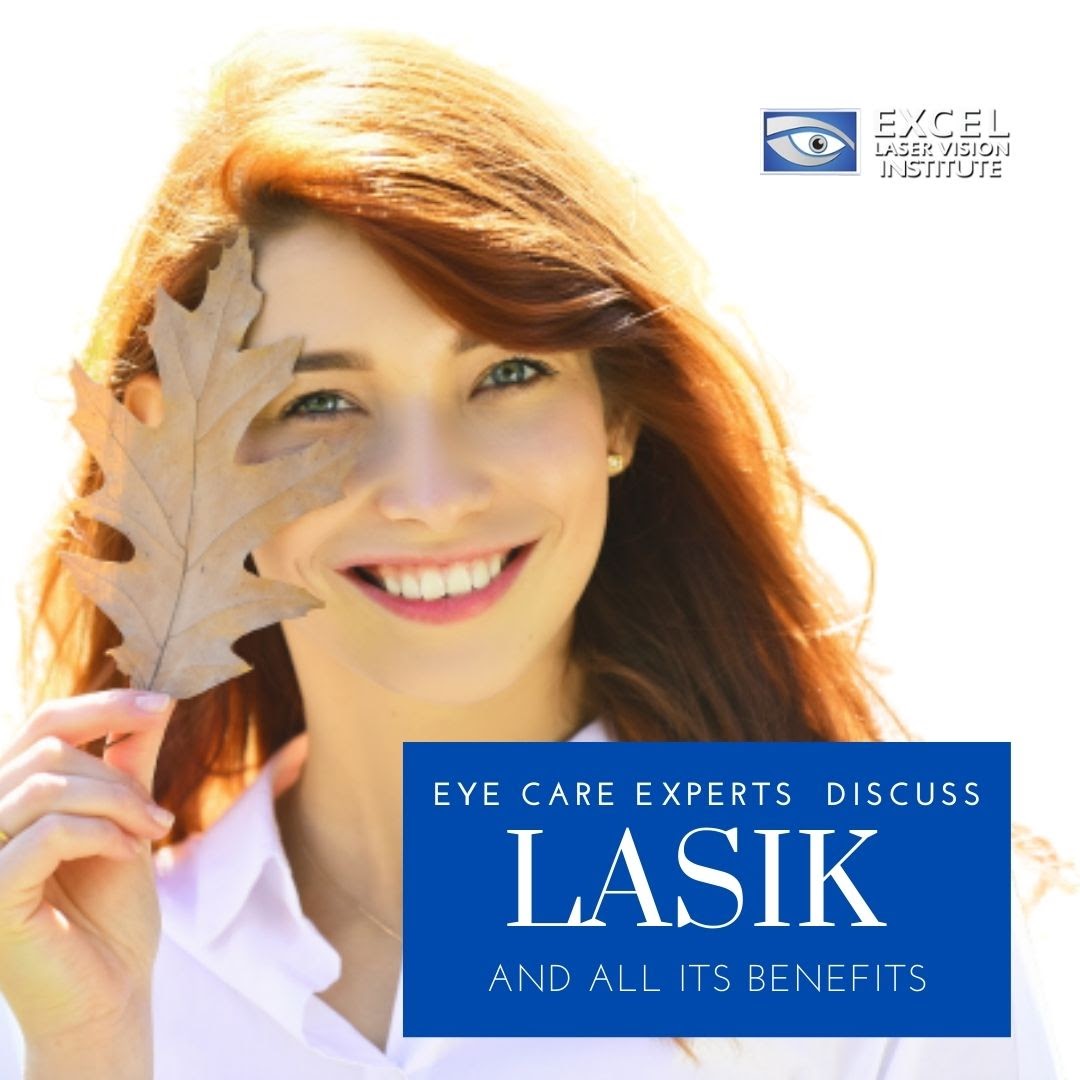
Eye Care Experts Discuss LASIK and All its Benefits
One of the most impressive things about laser eye surgery is its ability to permanently reshape the eye’s cornea in order to focus light better. Thanks to this technology, LASIK clinics in Los Angeles such as Excel Laser Vision Institutecan offer many patients crystal clear vision without the need for contacts or glasses. Since LASIK was approved by the FDA, laser machines have become even more precise and customizable, allowing vision correction to be more widely available and effective. Now, LASIK has been proven to treat a range of nearsighted and farsighted prescriptions as well as astigmatism.
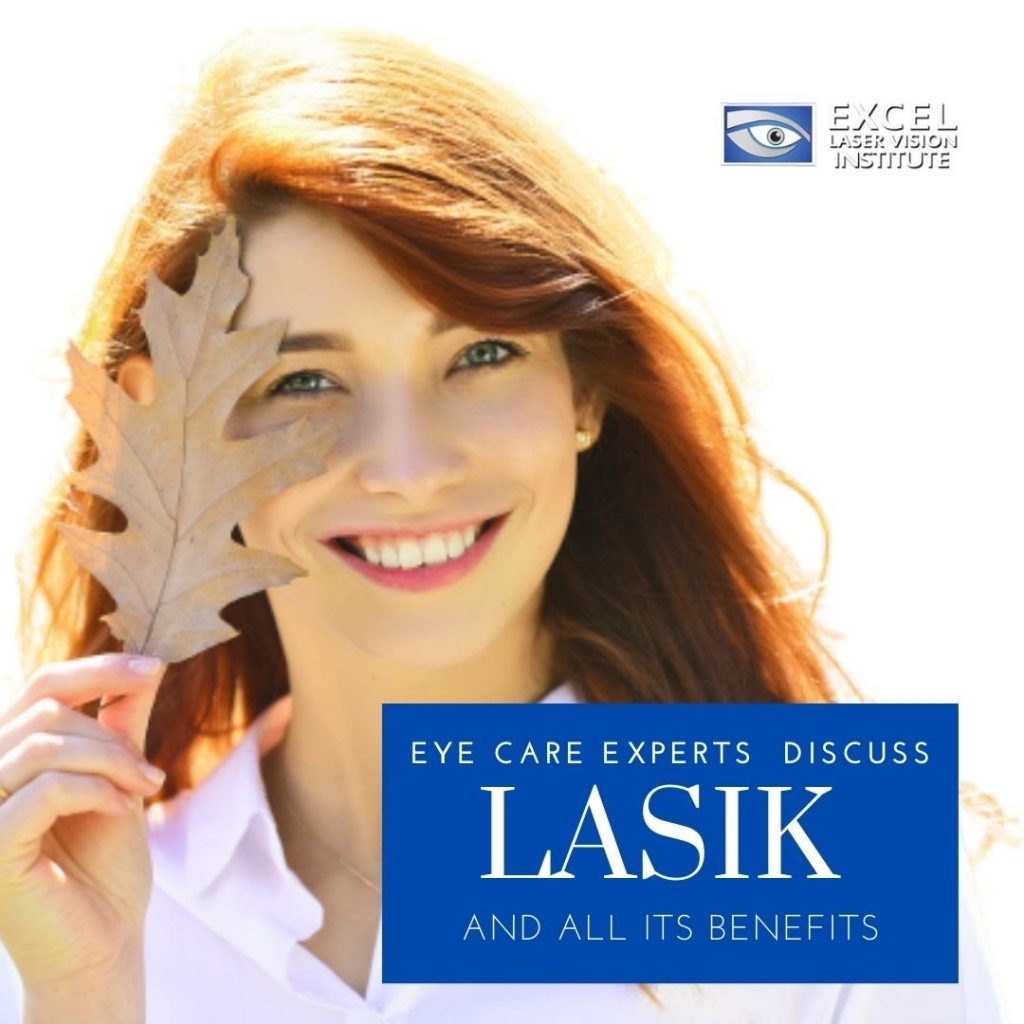
Unlike other forms of vision correction, laser eye surgery is a long-term investment. This is why LASIK eye surgery cost must be considered against the micro expenses that one must pay for glasses and contacts. When comparing the expenses, many patients find that LASIK is actually the more cost-effective option. While the initial cost is much higher, it is a one-time payment for a lifetime of benefits. On the other hand, maintaining corrective eyewear can really add up over the years as well as provide a certain inconvenience to people.
The best laser eye surgery is long-lasting. According to eye care experts, few patients require a LASIK enhancement after their initial procedure. In fact, only 6% of patients opt for an enhancement procedure within 10 years of the surgery when their initial prescription was stronger than -10.0D. LASIK is not perfect, but many patients say that any changes to their crystal clear vision over the years are subtle and provide no inconvenience to their lifestyle.
LASIK clinics such as Excel Laser Vision Institute are busier than they were twenty years ago because more people are hearing the success stories that come from this elective procedure. When refractive surgery was first introduced, many people were skeptical of its effectiveness and afraid of anything too invasive. Fortunately, LASIK surgeons have proven that this surgery can not only be performed safely and precisely, but it has the power to change people’s lives.
Suddenly, people are equipped to enter into certain professional fields that they might have been blocked from with their previous vision status. People are also experiencing greater joy in their day to day life. Whether it’s being able to swim, camp, or drive, people that receive laser eye surgery no longer have to be concerned about their corrective lenses. Instead, they can operate as if gifted with a natural 20/20 vision.
LASIK has become the most popular vision correction procedure with one of the highest satisfaction rates of any elective procedure. Now that people have this vision correction alternative, many people are achieving their vision goals at a faster rate than ever before.
If you would like to find out if you’re eligible for LASIK, then you can visit one of Excel Laser Vision Institute’s branch in Los Angeles for a thorough eye exam and consultation. Our experienced staff will help you determine the right solution to your vision needs and our dedicated surgeon will make your goals a reality.
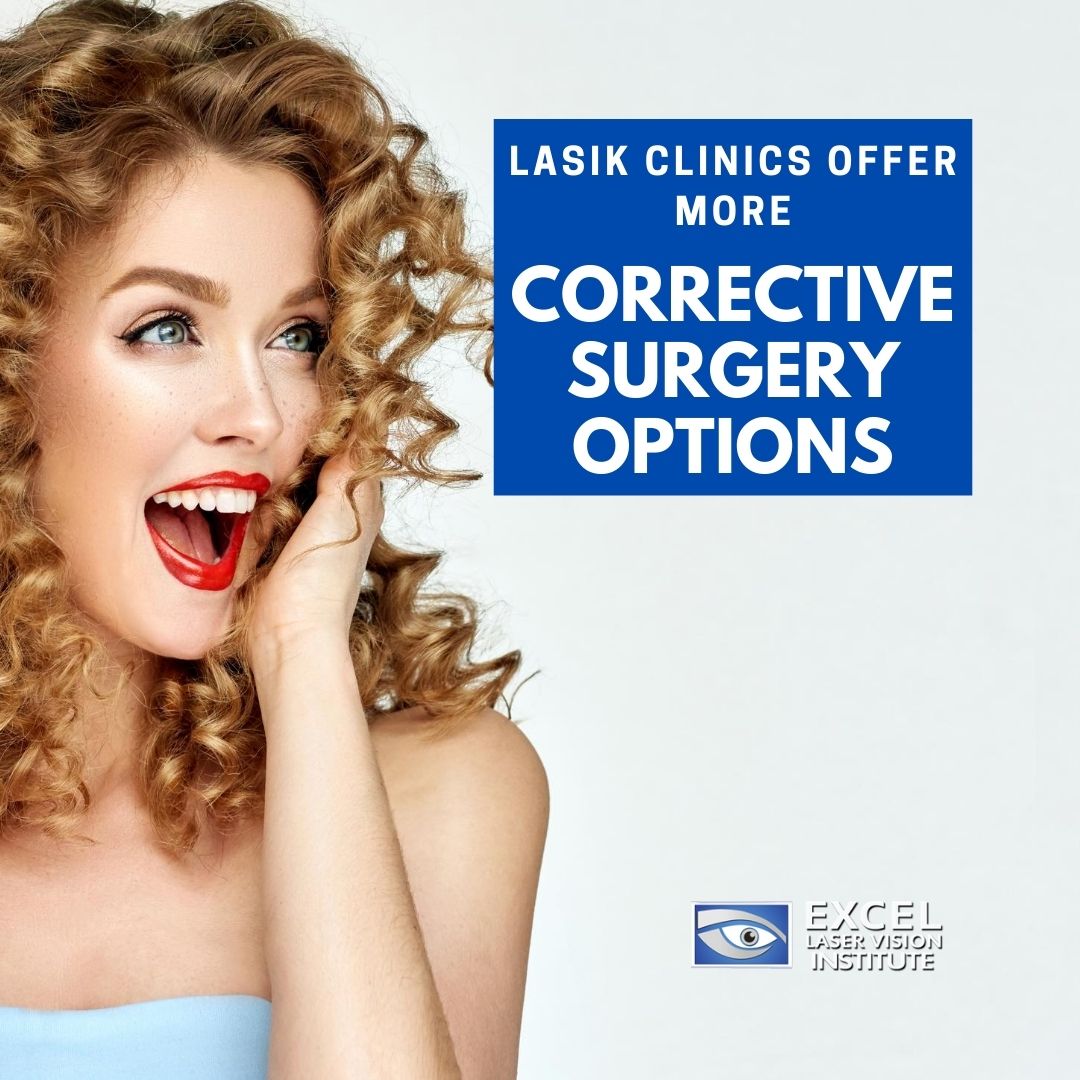
LASIK Clinics Offer More Corrective Surgery Options
When most people think of laser eye surgery, the word LASIK (laser in situ keratomileusis) comes to mind. However, most people don’t realize that a good LASIK clinic in Los Angeles like Excel Laser Vision Institute offers more than this traditional method of vision correction. There are different types of LASIK surgery, marked by the kinds of tools and strategies utilized.
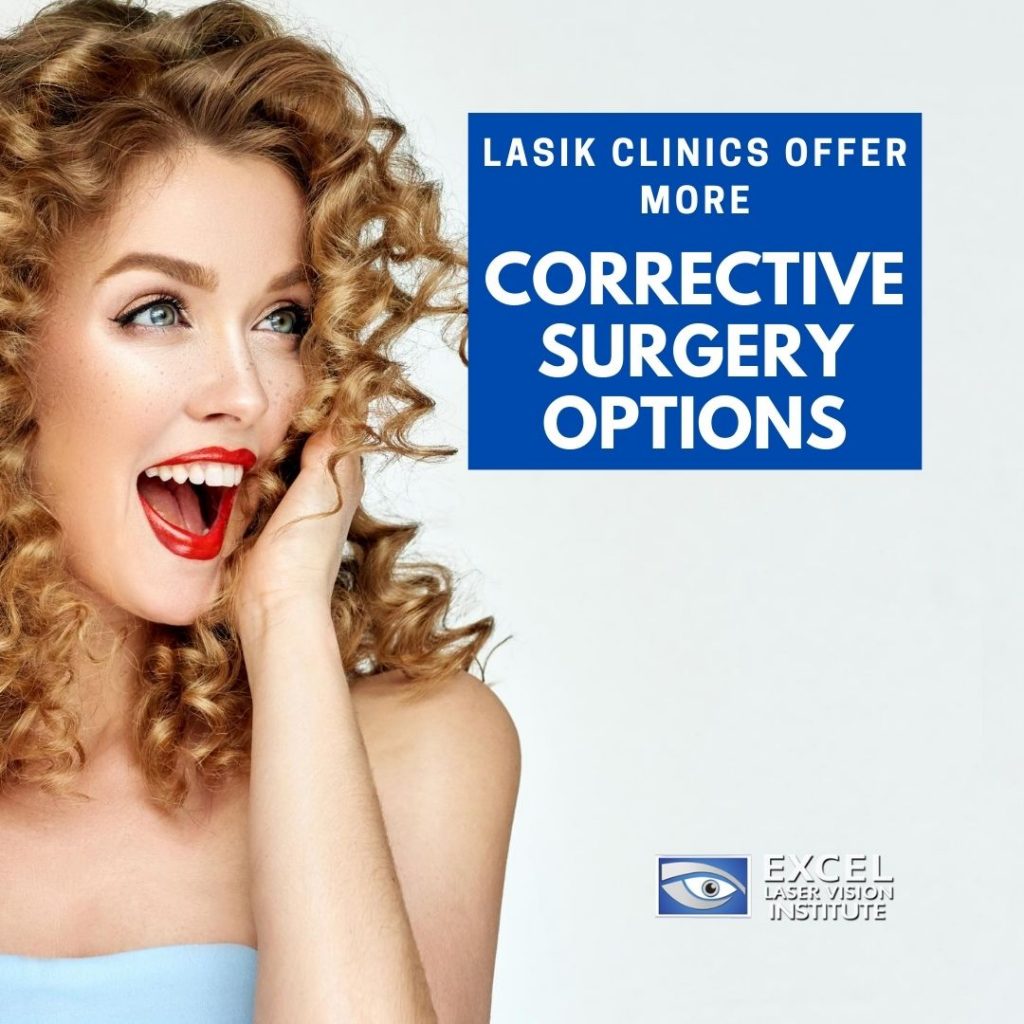
The introduction of the femtosecond laser allowed LASIK surgeons to create the corneal flap more precisely, which then formed the idea of “bladeless” LASIK. This laser technology also supported the improvement of cataract surgeries and prompted the invention of SMILE, a LASIK alternative that requires no flap and no excimer laser.
If you’re looking for the best laser eye surgery in Los Angeles, then you must find a clinic that offers multiple procedures. This ensures that there are more options for your individual eye condition and vision goals. Traditional LASIK is not right for everyone and there are plenty of safe, efficient alternatives that provide the same amazing results. When you visit a clinic that offers alternatives like SMILE, you can be assured that their surgeons have the utmost attention to patient care and experience with the latest methods and technology.
SMILE stands for small-incision lenticule extraction and is especially helpful for people with varying prescriptions of nearsightedness. The way that this alternative differs from LASIK is that it only utilizes the femtosecond laser for a small incision to extract tissue, rather than an entire flap. Patients who are more suited to SMILE, rather than LASIK, may have more sensitive eye conditions that would benefit from a flap-free procedure.
Another potential vision correction alternative that your LASIK clinic such as Excel Laser Vision Institute might offer is PRK. This procedure actually predates traditional LASIK, but has its advantages for people with certain eye conditions. For example, when you visit an eye center for an in-depth evaluation, your eye care professional will check the width of your cornea to see if you qualify for LASIK eye surgery. People with naturally thin corneas may not be eligible for the procedure; however, they can greatly benefit from the PRK method.
Once your laser eye surgeon completes your eye examination, they will recommend the best procedure to treat your refractive errors. Some factors that may play into your candidacy for one surgery or another are your prescription, eye health, pupil size, cornea width, and any preexisting health conditions. Your surgeon will discuss the entirety of the procedure, from the day of the surgery to the following post-operative appointments. Recovery is often very quick for LASIK; however, the timeline may vary depending on whether you are receiving an alternative version of vision correction.
In terms of LASIK eye surgery cost, this will fluctuate depending on the patient’s individual eye condition and the chosen procedure. However, laser eye surgery has never been more affordable and many clinics offer no-interest financing options to make payments even more manageable.
The next time you think about getting laser eye surgery, you should schedule an appointment at the Excel Laser Vision Institute and speak to an eye care professional about your vision goals. With a variety of vision correction procedures available, you will be able to achieve the clarity of vision you desire to improve your quality of life.

Quit Using Contacts Lenses with the Best Laser Eye Surgery in Los Angeles
Do you often misplace your contact lenses? Are you tired of wearing and cleaning them, but you don’t want to go back to using eyeglasses? If so, consider getting the best laser eye surgery in Los Angeles.
While undergoing Lasik eye surgery does demand a significant sum upfront, it will help you save more money in the long run. Consider how much you spend on contact lens-related instances every year. You need to purchase cleaning solution regularly to keep your contacts in top condition. If your eyes react negatively to your contacts—and this can happen months into wearing them—you’ll need to consult your eye care specialist immediately. There’s also the problem of getting replacements whenever you lose or misplace them.
How Lasik Eye Surgery Eliminates the Need for Contacts
Eyeglasses and contact lenses are typically prescribed to make up for the eye’s refractive error. These visual aids bend light rays in a way that cancels out the refractive error.
Lasik eye surgery in Los Angeles reduces or eliminates the need for visual aids by permanently correcting the refractive error. Here’s how it works.
- An eye surgeon alters the shape of the cornea with a microkeratome, making a precise corneal flap.
- They expose the corneal tissue underneath by pulling back the flap.
- Then, they make the necessary alterations with an excimer laser to treat the eye’s refractive error.
- Once the changes are done, the flap is repositioned on top of the corneal tissue.
What You Need to Know Before Getting Lasik Eye Surgery
Think laser eye surgery is for you? Don’t search for a qualified eye surgeon just yet. Here are some things that every potential Lasik patient should consider before getting the procedure.
- Not everyone can undergo laser eye surgery. You can only get the procedure if:
- You are 18 years old and above.
- You have a stable vision for at least a year.
- Your profession or vocation does not prevent you from getting Lasik surgery.
- You have no medical or ocular contraindications to the procedure.
- There’s a chance that you will need eyeglasses after the procedure. As mentioned before, laser eye surgery is designed to reduce—if not eliminate—the need for corrective visual aids. Most patients do end up with a vision that’s good enough to forgo the use of contacts and glasses post-procedure. Some, however, still require visual assistance. Consult an eye specialist if you want to find out how you’ll fare after getting Lasik eye surgery.
- Contrary to what most people believe, Lasik eye surgery is not unaffordable. Yes, it is expensive up front. However, given the numerous options for Lasik financing in Los Angeles, it is certainly not unaffordable. Since most health insurances don’t cover the procedure, many clinics offer special payment options to accommodate various patients.
Get Better Vision Today!
Do you think getting Lasik surgery is your best option for improving your vision and getting rid of your contacts? Contact Excel Laser Vision Institute today! With over two decades of successful Lasik surgeries under our belt, you can rest assured that you’ll leave our clinic with your vision better than ever.
Worried that you can’t afford our services? Don’t be. We offer several flexible payment options that can surely accommodate your financing needs. Click here to find out more. Experience the best laser eye surgery in Los Angeles!


